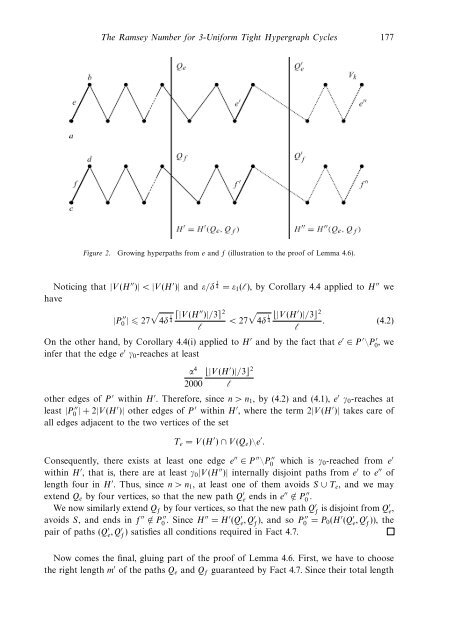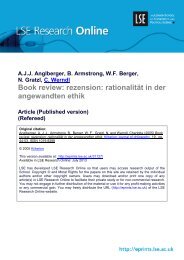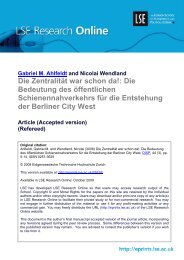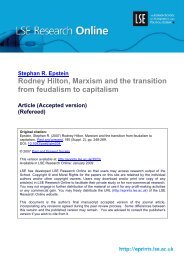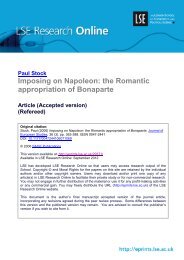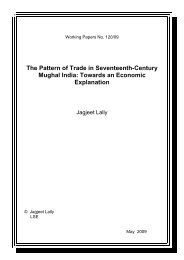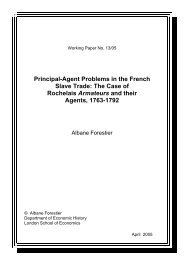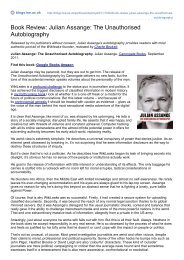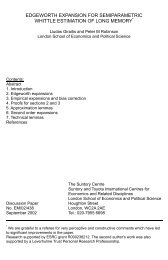The Ramsey Number for 3-Uniform Tight Hypergraph Cycles Article
The Ramsey Number for 3-Uniform Tight Hypergraph Cycles Article
The Ramsey Number for 3-Uniform Tight Hypergraph Cycles Article
Create successful ePaper yourself
Turn your PDF publications into a flip-book with our unique Google optimized e-Paper software.
<strong>The</strong> <strong>Ramsey</strong> <strong>Number</strong> <strong>for</strong> 3-Uni<strong>for</strong>m <strong>Tight</strong> <strong>Hypergraph</strong> <strong>Cycles</strong> 177<br />
Figure 2. Growing hyperpaths from e and f (illustration to the proof of Lemma 4.6).<br />
Noticing that |V (H ′′ )| < |V (H ′ )| and ε/δ 1<br />
4 = ε1(ℓ), by Corollary 4.4 applied to H ′′ we<br />
have<br />
|P ′′<br />
�<br />
0 | � 27 4δ 1 ⌈|V (H<br />
4<br />
′′ )|/3⌉2 �<br />
< 27 4δ<br />
ℓ<br />
1 ⌊|V (H<br />
4<br />
′ )|/3⌋2 . (4.2)<br />
ℓ<br />
On the other hand, by Corollary 4.4(i) applied to H ′ and by the fact that e ′ ∈ P ′ \P ′ 0 ,we<br />
infer that the edge e ′ γ0-reaches at least<br />
α4 ⌊|V (H<br />
2000<br />
′ )|/3⌋2 ℓ<br />
other edges of P ′ within H ′ . <strong>The</strong>re<strong>for</strong>e, since n>n1, by (4.2) and (4.1), e ′ γ0-reaches at<br />
least |P ′′<br />
0 | +2|V (H′ )| other edges of P ′ within H ′ ,wheretheterm2|V (H ′ )| takes care of<br />
all edges adjacent to the two vertices of the set<br />
Te = V (H ′ ) ∩ V (Qe)\e ′ .<br />
Consequently, there exists at least one edge e ′′ ∈ P ′′ \P ′′<br />
0 which is γ0-reached from e ′<br />
within H ′ , that is, there are at least γ0|V (H ′′ )| internally disjoint paths from e ′ to e ′′ of<br />
length four in H ′ . Thus, since n>n1, at least one of them avoids S ∪ Te, and we may<br />
extend Qe by four vertices, so that the new path Q ′ e ends in e ′′ �∈ P ′′<br />
0 .<br />
We now similarly extend Qf by four vertices, so that the new path Q ′ f is disjoint from Q′ e,<br />
avoids S, and ends in f ′′ �∈ P ′′<br />
0 . Since H′′ = H ′ (Q ′ e,Q ′ ′′<br />
f ), and so P 0 = P0(H ′ (Q ′ e,Q ′ f )), the<br />
pair of paths (Q ′ e,Q ′ f ) satisfies all conditions required in Fact 4.7.<br />
Now comes the final, gluing part of the proof of Lemma 4.6. First, we have to choose<br />
the right length m ′ of the paths Qe and Qf guaranteed by Fact 4.7. Since their total length


